How to See the Liberty Bell...in Queens
A copy of the famous American bell can be found inside a bank, which itself is modeled after Independence Hall!


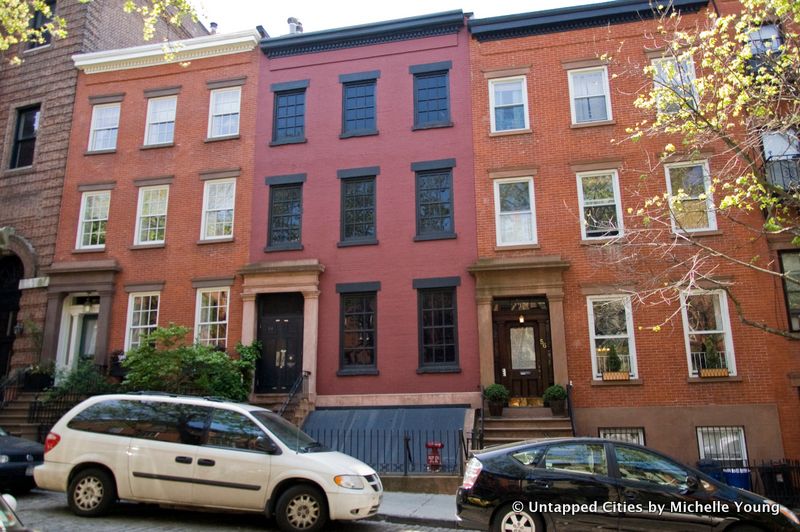
We’ve put together a list (a real list, no hoaxes here!) of some of the best pranks and hoaxes in New York City over the years. While some are legitimate, others are just actual fake or historically inaccurate infrastructures and objects. So, for a good laugh, here are 10 of the city’s pranks, hoaxes, and the like. We certainly had a good time putting this together.
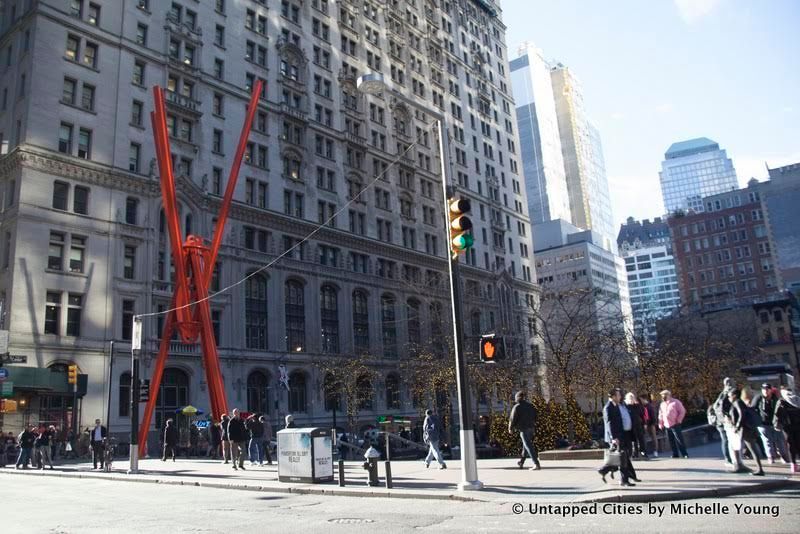
In 1987, the New York Times gave its annual account on the weird April Fools Day pranks that happened in the city, and one of them just happened to involve vegetables. And not just any vegetable, “Bob’s Lucky Potatoes” sold by Bob Golub at the corner of Liberty Street and Broadway, near Wall Street. But what used to be a joke turned into an actual profit.
Turns out, Golub made about $100 a day selling his felt-tipped pen marked potatoes sprinkled with water from his grandma’s lucky well to stockbrokers. The prices of the vegetable are whatever the customer makes them to be, although he did once get a $200 tip from a stockbroker who hit it big while carrying one of Golub’s potatoes in his pocket. He wasn’t the only one either, apparently another customer bought Golub a tuxedo after winning several thousands of dollars in the lottery.
So, in 1987, there were, as Golub puts it “guys making $500,000 a year walking around here with lucky potatoes in their suits.” Whether or not they really were will never be known, but who knew an April Fools Day prank could turn a profit?
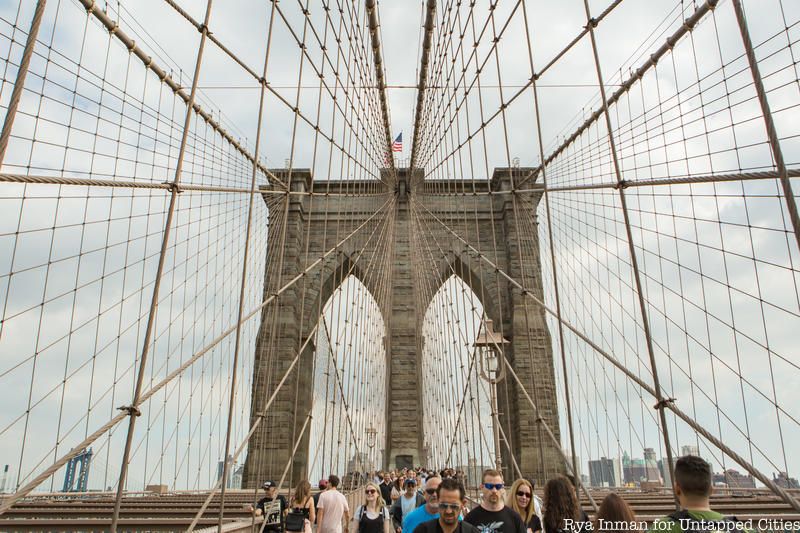
Back in the late 19th and early 20th centuries, when some of New York City’s major landmarks, like the Brooklyn Bridge, were built, there were con artists who would con unsuspecting tourists into “buying” them. One of most famous of these was George C. Parker who sold the Brooklyn Bridge hundred of times over. Parker would sell the bridge from anywhere between $50 to $50,000.
Parker also “sold” other landmarks such as Madison Square Garden, the Metropolitan Museum, and Grant’s Tomb. Besides him, there were two other famous con men who sold the bridge, a William McCloudy, or “I.O.U. O’Brien,” and Peaches O’Day who was the first man to ever sell it in 1899 for $200.
Another con artists duo sold the information booth at Grand Central Station (the version prior to the current terminal) to two fruit merchant brothers. The sale was not real, and the two brothers were gipped out of $100,000, never fully realizing that the sale was a con.
To read more about these and other famous landmark scams, check out Famous Landmark Scams From NYC And Paris to London.
You may recognize the name Improv Everywhere as the group that hosts the annual No Pants Subway Ride event in New York City. While the group does a few large scale events events like this, a smaller core group of members conducts pranks across the city all year round. Founded in April 2001, the group is a “prank collective that causes scenes of chaos and joy in public places.” They have executed over 100 missions, like taking over Best Buy, a freeze in Grand Central Terminal, Ghostbusters in the New York Public Library, since their inception which made it difficult to choose just one to showcase here.
The Carousel Horse Race took place on June 6, 2011 at the Bryant Park‘s Le Carrousel in Manhattan. It was just an ordinary day, kids taking turns enjoying rides on the metal bunnies, horses, frogs, and sleighs when a jockey, an undercover Improv Everywhere agent, decided to challenge the youngsters to a race. With the jockey came two dapper-dressed announcers, and a crowd in full fancy, day-at-the-races garb complete with hats and cigars, to cheer on the event.
The prank proved to be highly entertaining, enjoyed by the kids and adults all around. Witness the glorious prank for your self in the video below.
Like what you see and want to watch more? Check out there other missions here.

This is one of those non-prank object yet still odd enough and funny enough to add to this list. Throughout New York City, there are multiple fake townhouses hiding infrastructure like hidden subway ventilators in the Brooklyn Heights townhouse featured above. One in the Bronx hiding a substation run by Con Edison, and a Greenwich Village building facade hiding an emergency ventilation plant.
The townhouses look very much like real residences, but the blackened windows and fact that very few people ever enter and exit them tell you otherwise. They still stand today, continuing to masquerade on as homes.
Want to know more about these fake townhouses and others around the world? Check out Hiding Infrastructure With Fake Townhouses in NYC, Paris, London and Toronto.
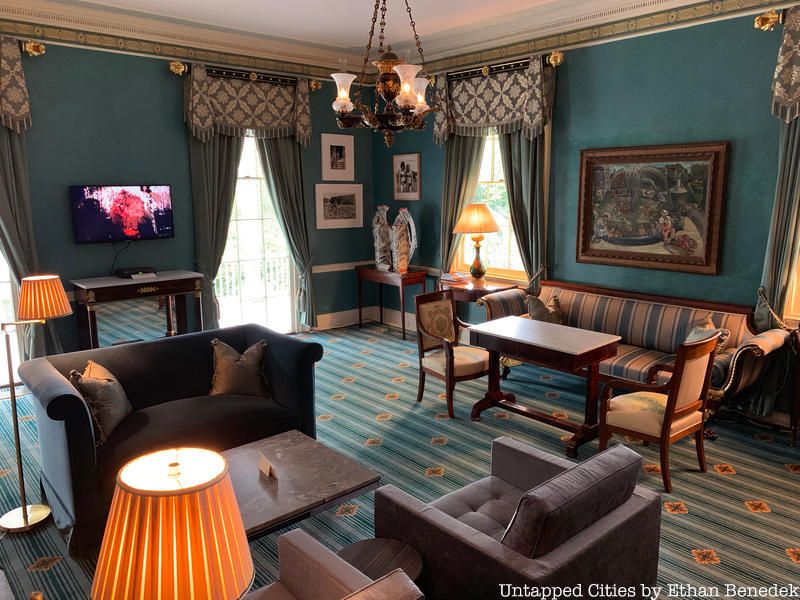
On April Fools Day in 1995, Our Town, an East Side weekly, decided to do a prank piece in which they discuss the city’s official Mayor residence, Gracie Mansion, being put up for sale, among many other famous New York City landmarks. The prank report explained that Gracie will “likely be sold to a developer who will tear down the landmark 1789 mansion and built luxury waterfront condos.”
The idea of the prank referred to Mayor Giuliani‘s plan to sell off city-owned properties to close the billion dollar budget gap the city suffered. The piece quoted him and even quoted Donald Trump, a possible developer, saying “It would be the jewel in my crown.” Many citizens believed the article and called both Our Town and City Hall with protests. While there were many hints, including the dateline and author, everybody had a hard time believing it was all a hoax.
The piece even went into further, more absurd details saying that Central Park, Yankee Stadium and even the subway system were on the chopping block. Our Town also explained the city was ready to use eminent domain to seize churches and synagogues that would also eventually be sold. An accompanying for-sale list was published calling out even more landmark areas including “the Staten Island Ferry, Coney Island, all the libraries, Rikers Island, the Brooklyn Bridge, all the housing projects – everything.”
The idea of this is rather terrifying and outrageous, but it was, after all (and thank God) only a prank.

Unfortunately, this one is not a real hoax either which should raise some concern seeing that these plaques are supposed to denote factual historical information about the famous people who have lived or been in New York City over the past few hundred years. So here are two incorrect plaques in the city:
A plaque on Macy’s at 34th street between Broadway and 7th Avenue claims that Thomas Edison projected the first moving picture on April 23, 1896, with the “Vitascope” at a hall that used to sit where Macy’s is now. While that sounds cool, it’s not exactly true. It was Edison’s first moving picture and the first one to be played on screen to a paying audience. The actual very first one was in Paris in 1895.
Another plaque on 122 E. 17th Street claims that Washington Irving lived there. There is, however, no evidence that he lived there. Although, Irving’s nephew lived at 120 E. 17th Street and had a son named Washington Irving. This information is probably what led to some confusion and led people to believe the famous Irving resided at 122 E. 17th Street.
For more, check out other Lost and Incorrect Historical Plaques in NYC, and a woman’s quest to put up her own plaques.
https://www.youtube.com/watch?v=fQwO6lh6rgQ
For two weeks in March 2005, world-renowned graffiti artist Banksy made his mark on four major New York Institutions: The Museum of Modern Art, Metropolitan Museum of Art, Brooklyn Museum, and the American Museum of Natural History. Bansky snuck in his own work and using an adhesive, mounted them on the walls of these museums along side other famous works. He left one piece at each of these and they stayed up for about one day until guards noticed and removed them.
The works themselves were funny pieces but did not blow over well with some of the museum officials. Elyse Topalian, a spokeswoman for the Met said “I think it’s fair to say that it would take more than a piece of Scotch tape to get a work of art into the Met.” The work in question was a small, gold-framed portrait of a woman wearing a gas mask, was hung near paintings in the American wing. Each rogue piece in the museums came with an accompanying description.
So how did he get them into the museums? Apparently, Banksy came only during normal visiting hours. He explained to the New York Times that “you just have to glue on a fake beard and move with the times.” In a statement he gave to NPR, he researched Harry Houdini for ideas on how to get his works inside, many of which are really not that small. As to why he did the pranks, “I thought some of [the paintings] were quite good. That’s why I thought, you know, put them in a gallery. Otherwise, they would just sit at home and no one would see them.”
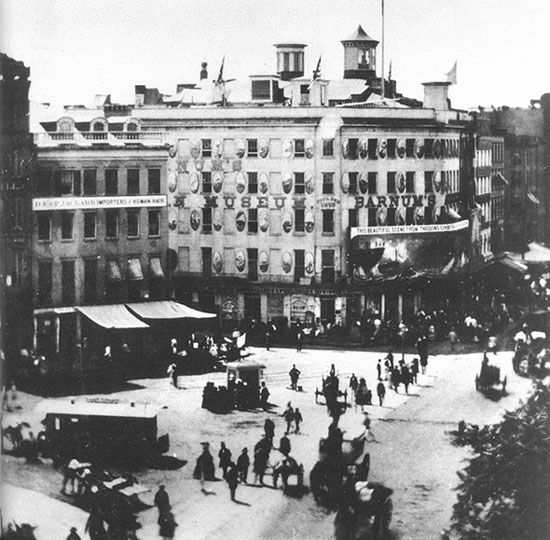
Photo in public domain from Wikimedia Commons
P.T. Barnum was a showman and business man who, besides founding the Barnum & Bailey Circus, was known for his many ridiculous but highly celebrated hoaxes. One of his most famous ones was the Feejee Mermaid exhibit. In the early 1800s, an American sailor, Samuel Barrett Eades, sold his ship for a supposed mermaid that was discovered off the coast of Japan. He took it back to the United States and put it on display between 1823 and 1825, only to go broke when the specimen was proven a fake.
Fake or not, Barnum acquired the “mermaid” in 1842 from Moses Kimball of the Boston Museum. Barnum gave each New York City newspaper an exclusive scoop on the new exhibit and even offered up a woodblock illustration. The duped newspapers all ran the same “exclusive” story, resulting in Barnum’s new mermaid exhibit getting a ton of free publicity.
When the exhibit opened, crowds of people came to see the mythical creature which was accompanied with lectures by a Dr. J Griffin of the British Lyceum of Natural History. Not only was the mermaid a fake, but Dr. Griffin was too. Barnum hired a Levi Lyman to pose as an expert from this fictional British museum.
The mermaid in question turned out actually to be the head and torso of a baby monkey sewn onto a fish tail, covered with paper mache, which is actually just way more creepy than it is mythical. Today, the location of the this weird creature is unknown, though it most likely died in the fire that destroyed Barnum’s American Museum in 1865.
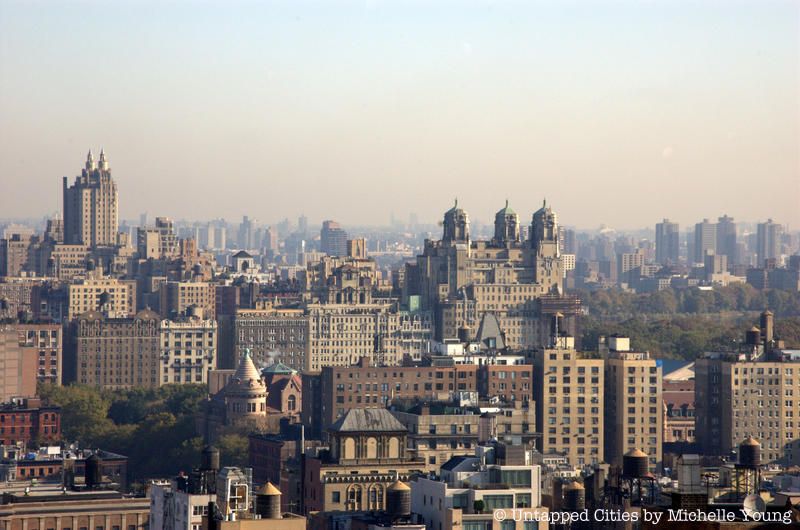
So you want your child to attend the prestigious Porsafillo Preschool Academy on the Upper West Side? Get ready to submit their DNA profile! Although this honestly wouldn’t all too surprising if it were true, it was actually NPR’s 2012 April Fools Day prank. It should also be worth mentioning that this is a made-up school, plus the name of the school is an anagram for April Fools.
“Porsafillo Pre” required that DNA tests be performed on applicants in order to “weed out the kids who have no chance” at getting into the school that teach C++ and has a Mandarin Chinese Immersion program. The school even employed a child neurologist specifically to implement the policy.
The report went on to describe an expecting mother who was already doing a DNA test for the admissions process at a hospital that hasdstruck a deal with the school. NPR even refers to a phony New York Times article that called the process “ghoulish” and “unethical.” The piece ends with a statement from the school declaring that their process is anything but unethical, “it’s extremely ethical. This is now no longer a subjective decision.”
The New York Times responded with an article talking about NPR’s report but also seriously expanded on the issue of pre-school admissions and kindergarten redshirting. Even though NPR’s fake report was a complete hoax, it doesn’t seem entirely too ridiculous. The New York Times ended their piece, writing, “The only reason no elite preschool has adopted DNA tests is that no one has figured out how to use them to predict academic achievement. Yet.”
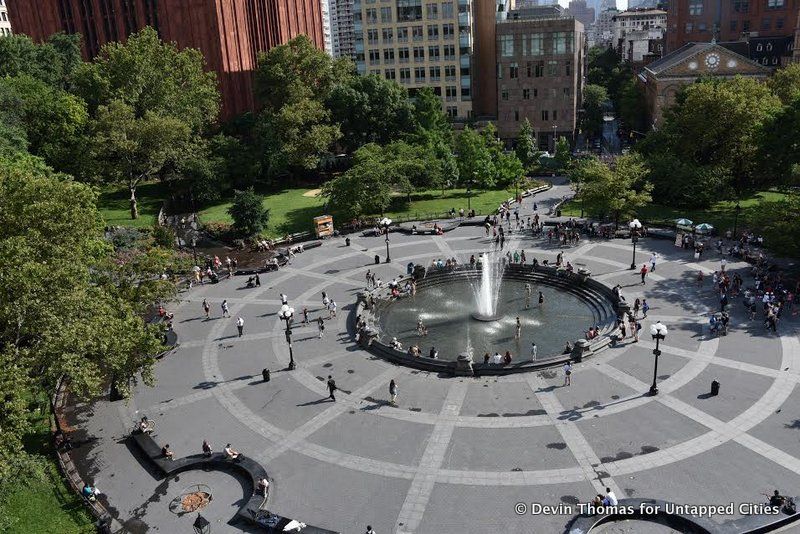
Nothing is more April Fools than the annual April Fool’s Day Parade in New York. The tradition started in 1986 as a response to being the left out of all the other annual holiday and ethnic parades in the city. It also a way for the people to express in a satirical way the foolishness of mankind, and other general grievances.
The parades are themed, changing every year with floats and costumed participants “poking fun at the past year’s displays of hype, hypocrisy, deceit, bigotry, and downright foolishness.” This year’s theme: “Mirror Mirror on the Wall…” To give you an idea of what that means, the Grand Marshall of the parade will be North Korean President Kim Jong-un dressed as the Pied Piper straddling his Ballistic Missile Float. A more detailed account of the parade program can be found here.
The parade will start at 12 pm noon at 59th Street and Fifth Avenue, and will run down 5th ending at Washington Square Park where the festivities will be held and the King of Fools will be crowned. The public is encouraged to participate be it with or without floats. Just remember, “The Parade Committee assumes no liability for damages caused by satire.”
Next, check out Photos of all 31 Days of Banksy’s NYC Residency.
Subscribe to our newsletter